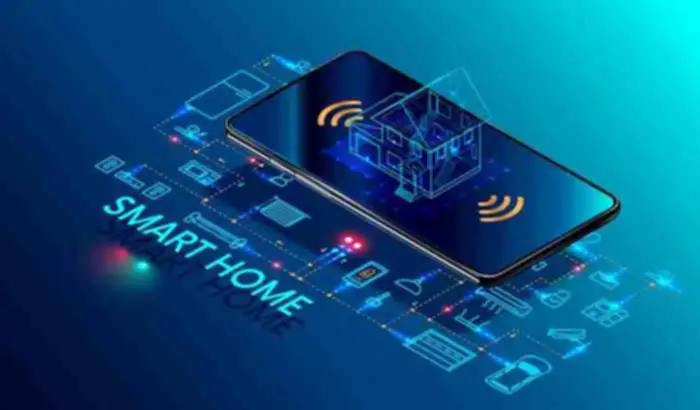Edge, Fog, And Cloud Computing: Key Comparisons
For these reasons, it’s unlikely that fog computing will utterly replace cloud computing. This signifies that cloud computing tends to be more vulnerable to points with quality and consistency than fog computing since failures at one location affect the entire system. In The End, whereas each models have their advantages and downsides, it’s clear that cloud computing is not an excellent option for all functions and industries.
Even understanding the difference between cloud, fog and edge computing, it may be challenging to determine out which strategy to choose and tips on how to extract actual advantages from it. The know-how landscape for IoT and large knowledge has been altering quickly within the last a quantity of cloud and fog computing years. Adoption of cloud and different types of computing for IoT requires abilities and expertise. IoT services ought to rely on protected information storage able to forestall hackers from trying to access and jeopardize the system.
Advantages
Based on the information and software, there are three kinds of cloud computing. The entrance finish is the person aspect, which permits accessing data present within the cloud over the browser or the computing software program. The working of cloud computing has two parts, which embody the front-end layer and the back-end layer. Firstly the sign is transmitted from an IoT device, after which knowledge is distributed by way of a protocol gateway at each node.
All these units will produce big amounts of data that must be processed rapidly and in a sustainable method. To meet the rising demand for IoT options, fog computing comes into action on par with cloud computing. The objective of this article is to match fog vs. cloud and inform you more about fog vs cloud computing prospects, as properly as their professionals and cons. Relying on individual needs and the type of functions or companies being applied, one may choose between cloud computing and fog computing.
Decentralized storage represents one of the methods to safe sensitive sources. On the opposite hand, centralized cloud options provide in-built security to protect massive volume of data. Cloud, edge and fog computing are often https://www.globalcloudteam.com/ talked about at the facet of IoT as a result of these applied sciences assist each other. Internet of Issues depends on totally different knowledge administration companies to retailer and analyze IoT gadget knowledge and metrics, allow automation, and so on.

The fog is one other metaphor that has been used to describe computing, but it’s not as extensively understood. It’s nearer to the Web of Things (IoT) than the cloud, and it’s designed to handle the growing number of gadgets and data coming online. Discover edge computing’s pros and cons, including cost financial savings, reduced latency, and architectural issues. The following are the common reasons why corporations and organizations are moving in direction of cloud computing companies.
Security
- This localized approach enhances privacy, minimizes exposure to potential safety breaches, and permits for higher management over knowledge governance.
- This can be the distinction between fog computing and edge computing — fog acts as a community that connects to the cloud, whereas edge units could be loosely linked and act on their own.
- As A Substitute of saving info to local servers or units, customers retailer it on third-party online servers placed in distant information centers.
Merely put, edge computing is the practice of moving chosen functions and knowledge away from centralized servers and nearer to the users or issues that want them. This can improve performance, responsiveness, and security whereas reducing latency, bandwidth requirements, and vitality consumption. By 2020, there might be 30 billion IoT gadgets worldwide, and in 2025, the quantity will exceed 75 billion connected issues, in accordance with Statista.
Each models have many practical purposes in today’s digital age and will play an increasingly essential position in the future of computing. The time period “fog computing” refers to a decentralized computing architecture or method where computer sources are dispersed between the information supply and the cloud or other data heart and the information middle itself. A paradigm known as fog computing responds to person Digital Trust queries at edge networks. Typically, the hubs, routers, gateways, and other networking-related equipment at the fog layer perform networking-related tasks. In Accordance to researchers, these gadgets are anticipated to be able to concurrent processing and networking tasks.

Deploying and setting distributed computing nodes, checking hardware compatibility, and handling resources require sources and might result in upfront costs. Bettering performance and effectivity can present enhanced privateness, security, and reliability for related units by decreasing their dependency on the internet. Overall, fog computing represents a significant shift in how knowledge is collected and processed, offering exciting new possibilities for connecting gadgets and managing info in new ways. In this post, we’ll explore the key differences between cloud and fog computing and explain why fog computing and cloud computing are becoming more and more popular among businesses. By understanding these variations, you can also make an knowledgeable determination about which resolution is greatest for your corporation.
Utilizing the advantages of each paradigms, this hybrid structure enables effective knowledge processing and storage distribution. With cloud computing, knowledge is saved and processed in remote information centers managed by cloud service providers. Fog computing resolves this issue by enabling local knowledge processing on the network edge, considerably reducing latency and optimizing bandwidth usage. This functionality is crucial for time-sensitive purposes like autonomous automobiles, industrial automation, and Internet of Things (IoT) deployments. Integrating the Web of Issues with the Cloud is an inexpensive method to do business. Off-premises services provide the scalability and suppleness needed to handle and analyze information collected by linked gadgets.

Key Variations
The new know-how is more likely to have the greatest impression on the event of IoT, embedded AI and 5G solutions, as they, like by no means earlier than, demand agility and seamless connections. Sadly, there’s nothing immaculate, and cloud expertise has some downsides, especially for the Internet of Issues providers. Fog and cloud are both computing platforms that permit the corporate to manage its communication successfully and effectively.
On the opposite hand, fog computing extends cloud computing and providers to the edge of an enterprise’s community, enabling real-time information analysis and decision-making. It processes data immediately on units at the supply, guaranteeing excessive operational pace and effectivity. This distributed model presents several advantages, including lowered latency and quicker data retrieval.
One ought to note that fog networking is not a separate structure and it doesn’t exchange cloud computing however somewhat enhances it, getting as near the supply of knowledge as possible. Cloud computing is the on-demand deliverability of hosted providers over the internet. It permits customers to entry data over a remote location without any restriction inside a selected place. Whereas these suppliers adhere to stringent safety measures, considerations concerning knowledge privacy and compliance regulations persist.
Both these parts are integrated to offer the consumer with a seamless networking platform and handle visitors on the ground. It establishes a lacking link between cloud computing which the cloud and the Web of Issues have to receive and process locally over different nodes. We are already used to the technical term cloud, a network of a quantity of devices, computer systems, and servers connected to the Web. Devices on the fog layer usually carry out networking-related operations such as routers, gateways, bridges, and hubs.